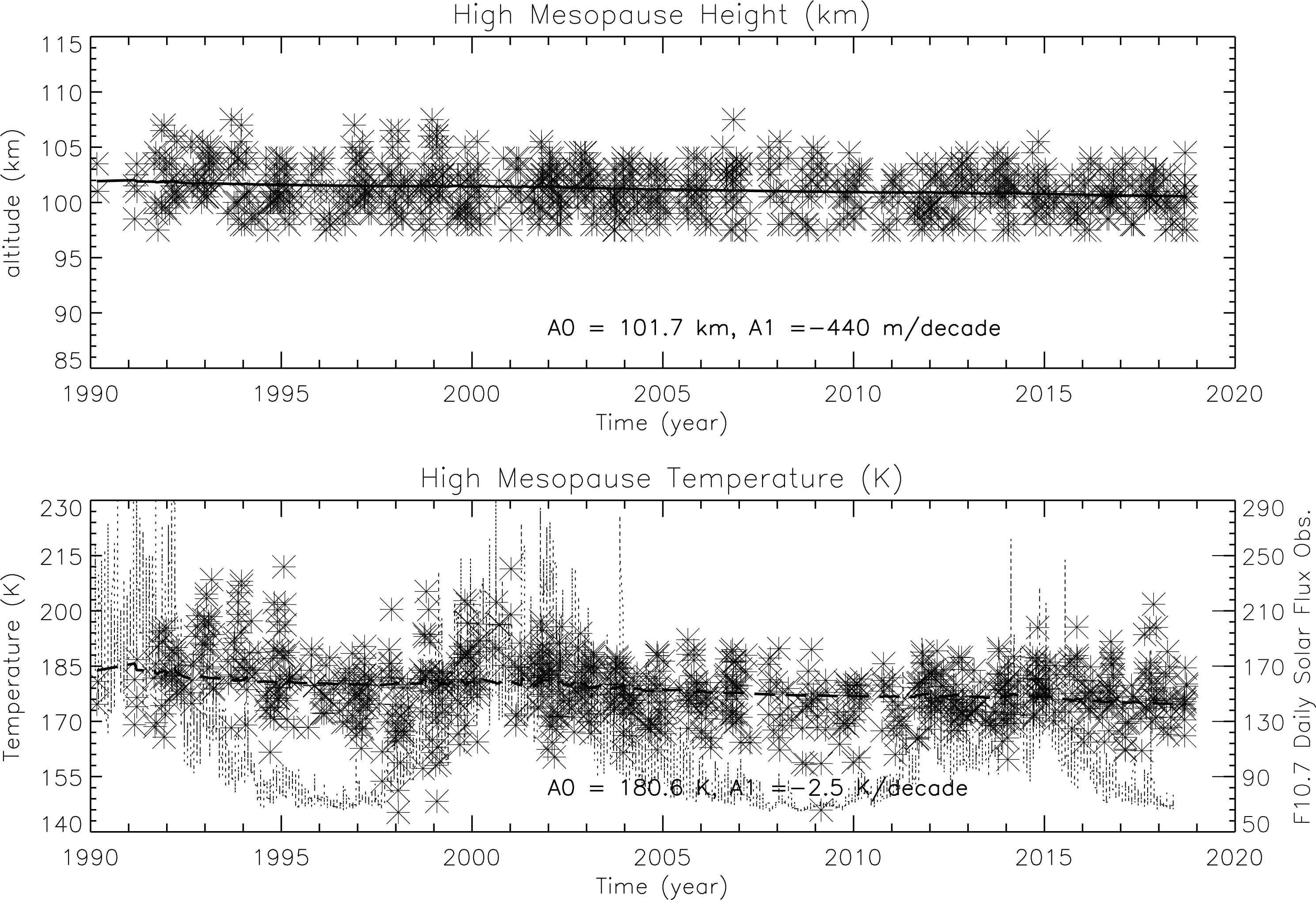The Gold's Beam project starts its story a long time ago at Colorado State University. The Colorado State University (CSU) Na lidar is a state of art instrument currently capable of measuring winds and temperatures throughout the MLT region (~80-105 km) with high precision over the full diurnal cycle.
The lidar was developed by Prof. C.Y. She and Prof. D. Kruger at CSU and began observations of the mesopause region in 1989 with regular nocturnal temperature measurements since 1991. To date, almost two solar cycles of data have obtained providing one of the most complete long-term measurements of MLT temperature at mid-latitudes. Figure 1 summarizes the nocturnal temperature measurements over the past 20 years illustrating the seasonal and inter-annual variability at 87 and 101 km altitude.

These ongoing measurements are of critical importance for improving our understanding of the mesopause dynamics and long-term temperature trends. Several upgrades to the lidar system have been made during this period, including the development of an acoustic-optical modulator and robust Faraday filters at CSU providing an important capability for full diurnal temperature and wind measurements. Since May 2002, ~ 6000 hours of temperature and wind data have been accumulated. This lidar is a key instrument in the formed Consortium for Rayleigh and Resonant Lidars (CRRL).
With the retirement of Prof. She in early 2010, the CRRL science team (with the approval of NSF) selected Utah State University (USU) as the new home for continued operation of this powerful lidar system. With its similar, latitudes (~41.6N) to Ft. Collins (CSU, 40.6N) and high quality observing conditions, USU provides excellent continuity for the established long-term measurements as well as new potential for detailed coordinated studies of the MLT region using a suite of optical and radar instruments at nearby Bear Lake Observatory (BLO).
The lidar was relocated to USU during the summer of 2010 and was setup in the new lidar facility in the SER building on campus alongside an existing Rayleigh lidar (Figure 2). Successful test observations were made in September, and by the end of October, about 120 hours of diurnal observations have been already obtained. These data are included in Figure 1 (shaded area) emphasize the continuity of the dataset. The richness of this dataset has enabled important studies of the dynamics in the mesopause region.